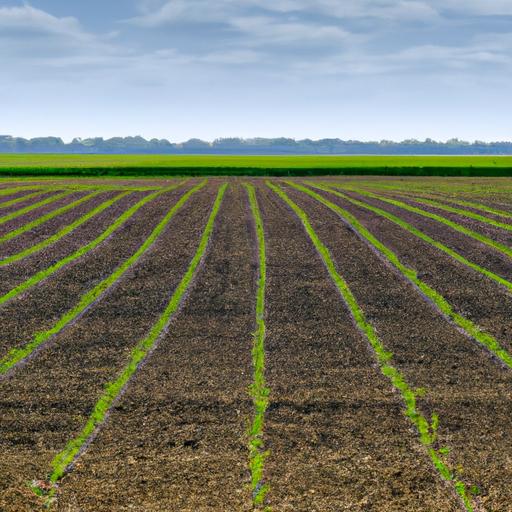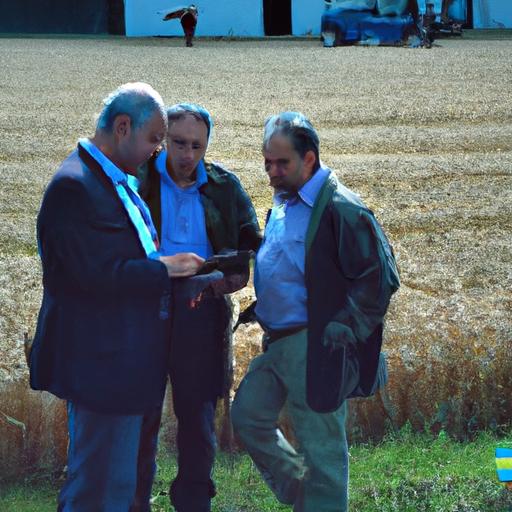In the face of ever-increasing challenges posed by climate change, farmers around the world are seeking innovative solutions to protect their livelihoods. One such solution, gaining momentum in agricultural communities, is the concept of climate-resilient crop insurance. This groundbreaking approach not only provides financial security for farmers in the event of crop failure due to extreme weather events, but also encourages sustainable farming practices that can help combat climate change. Let’s explore how this new form of insurance is revolutionizing the way farmers manage risk in an unpredictable environment.
Table of Contents
- 1. Understanding the importance of climate-resilient crop insurance for farmers
- 2. Challenges faced by farmers in ensuring crop resilience against changing climate
- 3. The role of government and insurance providers in promoting climate-resilient crop insurance
- 4. Innovative strategies for enhancing crop insurance coverage for farmers
- 5. Case studies of successful implementation of climate-resilient crop insurance programs
- 6. Looking towards the future: The potential benefits of widespread adoption of climate-resilient crop insurance for farmers.
1. Understanding the importance of climate-resilient crop insurance for farmers
By providing crop insurance, farmers are safeguarded against unpredictable weather patterns and natural disasters that can devastate their crops. Climate-resilient crop insurance plays a crucial role in ensuring the financial stability of farmers, allowing them to mitigate risks and recover from losses. This form of insurance not only protects farmers’ livelihoods but also contributes to the overall food security of communities.
With climate change exacerbating the frequency and severity of extreme weather events, the need for farmers to have access to reliable crop insurance has become increasingly apparent. Climate-resilient crop insurance policies are designed to address the unique challenges faced by farmers in adapting to changing climate conditions. These policies may include benefits such as coverage for crop failures due to drought, flooding, or other weather-related disasters, providing farmers with the support they need to continue cultivating their land and sustaining their livelihoods.

2. Challenges faced by farmers in ensuring crop resilience against changing climate
Crop resilience against changing climate poses numerous challenges for farmers. One major obstacle is the unpredictability of weather patterns, leading to extreme temperatures, droughts, floods, and unpredictable rainfall. These factors can greatly impact crop production and yield.
Additionally, farmers face difficulties in accessing resources and technologies to adapt to climate change. Lack of financial resources, limited access to sustainable farming practices, and inadequate infrastructure hinder farmers’ ability to implement effective resilience strategies. This can result in increased vulnerability to climate-related risks and threats to food security.
3. The role of government and insurance providers in promoting climate-resilient crop insurance
One way in which governments can promote climate-resilient crop insurance is by offering subsidies to farmers who invest in these types of insurance policies. This can help offset some of the costs associated with purchasing insurance that covers losses due to extreme weather events, encouraging more farmers to protect their crops. Additionally, governments can work with insurance providers to create policies that specifically address the unique risks farmers face in their region, ensuring that coverage is tailored to meet their needs.
Insurance providers also play a crucial role in promoting climate-resilient crop insurance by investing in research and development to improve their products. By incorporating data on climate trends and weather patterns into their risk assessment models, insurance companies can offer more accurate coverage and lower premiums to farmers. Furthermore, insurance providers can educate farmers on the benefits of climate-resilient crop insurance and help them understand how these policies can protect their livelihoods in the face of climate change.
4. Innovative strategies for enhancing crop insurance coverage for farmers
When it comes to enhancing crop insurance coverage for farmers, thinking outside the box is essential. One innovative strategy that has been gaining traction is the use of satellite technology to assess crop conditions and detect potential risks. By utilizing satellite data, insurers can provide more accurate coverage tailored to each farmer’s specific needs, ultimately reducing the risk of underinsurance or overinsurance.
Another creative approach is the implementation of parametric insurance, which pays out based on predetermined triggers such as weather patterns or yield levels, rather than actual crop losses. This allows for quicker claims processing and disbursement of funds, providing farmers with much-needed financial support in a timely manner. Additionally, offering microinsurance products targeted towards smallholder farmers can help bridge the gap in coverage for those who may not have access to traditional insurance options.
5. Case studies of successful implementation of climate-resilient crop insurance programs
One successful case study of implementing a climate-resilient crop insurance program is the partnership between a local agricultural cooperative and the government in a developing country. Through this collaboration, farmers were able to access affordable insurance that protected their crops against extreme weather events such as droughts and floods. This initiative not only ensured the financial security of farmers but also helped in stabilizing food production in the region.
Another noteworthy example is the use of remote sensing technology in a developed country to assess crop damages caused by climate-related disasters. By leveraging satellite imagery and data analytics, insurance companies were able to quickly process claims and provide timely compensation to affected farmers. This innovative approach not only streamlined the insurance process but also improved the overall resilience of the agricultural sector against climate risks.
6. Looking towards the future: The potential benefits of widespread adoption of climate-resilient crop insurance for farmers
The widespread adoption of climate-resilient crop insurance has the potential to revolutionize the agricultural industry by providing farmers with essential financial protection against the unpredictable impacts of climate change. By offering coverage for crop losses due to extreme weather events such as droughts, floods, and storms, this type of insurance can safeguard farmers’ livelihoods and ensure their economic stability. With the increasing frequency and intensity of climate-related disasters, the need for such insurance products has never been greater.
Furthermore, the adoption of climate-resilient crop insurance can encourage farmers to invest in sustainable agricultural practices that promote climate change mitigation and adaptation. By reducing the financial risks associated with climate-related crop failures, farmers may feel more inclined to adopt methods that enhance soil health, conserve water, and reduce greenhouse gas emissions. This shift towards sustainable farming practices not only benefits the environment but also helps farmers improve their yields and long-term profitability.
As we navigate the ever-changing climate landscape, it is imperative that we prioritize the resilience and well-being of our farmers. Climate-resilient crop insurance offers a glimmer of hope in the face of uncertainty, providing a safety net for those who tirelessly work to feed the world. By investing in sustainable and innovative solutions, we can empower our agricultural communities to thrive in the face of adversity. Let us continue to support and advocate for these crucial measures, ensuring a brighter and more secure future for generations to come.
